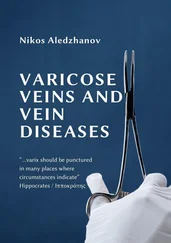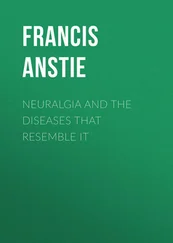More recently, molecular methods have become commercially available to diagnose respiratory viral infections. Most of these products detect a panel of respiratory viruses, including RSV. Some detect only influenza A, influenza B, and RSV, while others detect 12 or more viruses. The time to result for these molecular platforms varies from 70 minutes to 8 hours. Some of the tests provide random access testing, while others are more efficiently performed in daily batches. The main advantage of molecular detection of RSV is increased sensitivity, but specimen quality is not determined. The primary obstacle in routinely performing these tests in the clinical laboratory is the cost of the equipment, reagents, and personnel needed to perform molecular testing. Independent of the method used to diagnose RSV in the laboratory, a rapid result is important for management decisions, including infection control and treatment. Although rapid detection of respiratory viruses has been hypothesized to decrease unnecessary use of antibiotics and decrease length of hospital stay, there are few supporting data in the literature.
5.Since there is not a vaccine available to prevent infection nor is there a broadly effective antiviral agent to treat RSV, infants who are at risk for severe RSV disease should receive passive immunoprophylaxis with a humanized mouse monoclonal antibody preparation against RSV called palivizumab. Although expensive, palivizumab has been shown to decrease hospitalization rates by 50% and total wheezing days in the first year of life by 61%. At-risk infants receive five monthly doses of palivizumab during RSV season, typically November through March. This includes infants/children <24 months old with hemodynamically significant congenital heart disease or chronic lung disease and infants <12 months old who were born prematurely or have congenital abnormality or neuromuscular condition of the airway.
Like all respiratory viruses, RSV can cause health care-associated infections; therefore, patients with RSV infections should be put on droplet and contact precautions to prevent spread to other patients via health care personnel. If patients are not isolated and stringent infection control practices are not followed, secondary infection rates of 20 to 50% can occur. Cohorting of RSV-positive children and their health care providers, plus the use of gloves and gowns during contact with infected children and consistent hand washing before and after patient contact, has been shown to significantly lower RSV health care-associated infection rates. Though positive patients may be cohorted when private rooms are not available, many centers do not consider the sensitivity of the EIA high enough to place a child with a negative test in the same room as another child if there is a clinical suspicion of RSV. However, the negative predictive value of most of the molecular tests available would alleviate this concern. As with primary RSV infections, hospitalized patients with congenital heart disease, pulmonary disease, or an immunodeficiency are at greatest risk for life-threatening RSV infections.
6.No drugs that specifically target RSV are available for treatment. However, ribavirin (a nucleoside analog) has good in vitro activity against RSV and is FDA approved for RSV treatment. Ribavirin is generally delivered by aerosol since oral or intravenous administration may result in hepatic or bone marrow toxicity. The American Academy of Pediatrics recommends against the routine use of ribavirin in infants and children with lower respiratory tract illness because its efficacy in this population has not been proven. Randomized, controlled trials have demonstrated conflicting results. Further, ribavirin treatment is expensive. Treatment of RSV infection with ribavirin is reserved for immunosuppressed patients with severe RSV infection. Several reports have demonstrated that early administration of ribavirin significantly decreased lower respiratory tract illness, morbidity, and mortality in adult hematopoietic stem cell transplant recipients. Palivizumab cannot be used as a treatment for RSV; it only provides passive protection against infection.
1. American Academy of Pediatrics.2012. Respiratory syncytial virus, p 609–618. In Pickering LK, Baker CJ, Kimberlin DW, Long SS (ed), Red Book: 2009 Report of the Committee on Infectious Diseases , 28th ed. American Academy of Pediatrics, Elk Grove Village, IL.
2. Blanken MO, Rovers MM, Molenaar JM, Winkler-Seinstra PL, Meijer A, Kimpen JL, Bont L; Dutch RSV Neonatal Network.2013. Respiratory syncytial virus and recurrent wheeze in healthy preterm infants. N Engl J Med 368:1791–1799.
3. Leclair JM, Freeman J, Sullivan BF, Crowley CM, Goldmann DA.1987. Prevention of nosocomial respiratory syncytial virus infections through compliance with glove and gown isolation precautions. N Engl J Med 317:329–334.
4. Shah DP, Ghantoji SS, Shah JN, El Taoum KK, Jiang Y, Popat U, Hosing C, Rondon G, Tarrand JJ, Champlin RE, Chemaly RF.2013. Impact of aerosolized ribavirin on mortality in 280 allogeneic haematopoietic stem cell transplant recipients with respiratory syncytial virus infections. J Antimicrob Chemother 68:1872–1880.
5. Tregoning JS, Schwarze J.2010. Respiratory viral infections in infants: causes, clinical symptoms, virology, and immunology. Clin Microbiol Rev 23:74–98.
6. van Drunen Littel-van den Hurk S, Watkiss ER.2012. Pathogenesis of respiratory syncytial virus. Curr Opin Virol 2:300–305.
7. Villenave R, Shields MD, Power UF.2013. Respiratory syncytial virus interaction with human airway epithelium. Trends Microbiol 21:238–244.
Конец ознакомительного фрагмента.
Текст предоставлен ООО «ЛитРес».
Прочитайте эту книгу целиком, на ЛитРес.
Безопасно оплатить книгу можно банковской картой Visa, MasterCard, Maestro, со счета мобильного телефона, с платежного терминала, в салоне МТС или Связной, через PayPal, WebMoney, Яндекс.Деньги, QIWI Кошелек, бонусными картами или другим удобным Вам способом.












